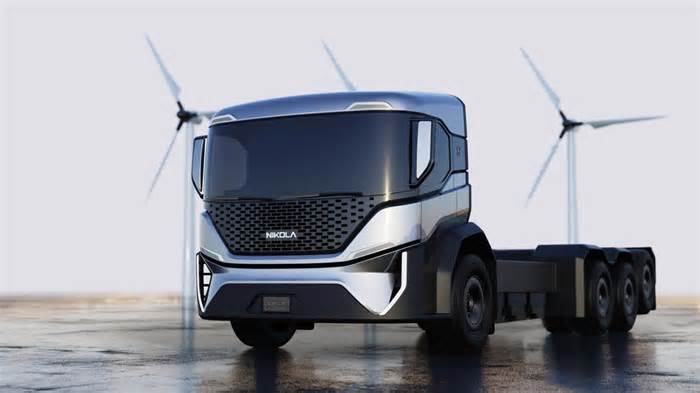The work vehicles are a variation of the Nikola Tre battery semi, which goes into production in Germany around the end of this year with assembly partner Iveco. Units for Republic will be built at Nikola’s U.S. factory that’s under construction in Coolidge, Arizona. The zero-emission vehicles will offer more than 150 miles of range and handle up to 1200 cans per charge, Phoenix-based Nikola said.
The order is the biggest to date for electric trash trucks in the U.S., and Republic has an option to expand it to up to 5,000 vehicles, Nikola said. The contract may be worth $1 billion to $2 billion, Nikola founder and Executive Chairman Trevor Milton said in a conference call. A traditional refuse truck with a diesel or natural gas engine typically costs about $500,000, he said, declining to provide a specific price for the Nikola model.
“The refuse market is one of the most stable markets in the industry and provides long-term shareholder value,” Milton said. “The Nikola Tre powertrain is ideal for the refuse market as it shares and uses the same batteries, controls, inverters and e-axle. By sharing the Tre platform, we can drive the cost down for both programs by using the same parts.”
“We’re pro-electrification,” Republic Services President Jon Vander Ark said in a conference call. His company is the second-largest U.S. recycling and waste hauler and buys about 20% of all refuse trucks sold annually. “I have no doubt over time the entire industry is going to get there.”
On-road tests of the Nikola refuse trucks start in 2022, with deliveries for Republic getting underway in 2023. The vehicle’s batteries will hold up 720kWh of electricity and be equipped with automated side and front-end loaders. Republic is assisting in the design, Nikola said.
Nikola shares jumped 12% to $41.16 in morning Nasdaq trading.
From Los Angeles, the U.S. capital of cars and congestion, I try to make sense of technology-driven changes reshaping transportation, cities and how we get around. I’ve
From Los Angeles, the U.S. capital of cars and congestion, I try to make sense of technology-driven changes reshaping transportation, cities and how we get around. I’ve tracked global automakers, advanced vehicle tech and environmental policy for more than two decades, including 15 years at Bloomberg, and squeezed in stints in the financial and corporate worlds. What’s your story?

